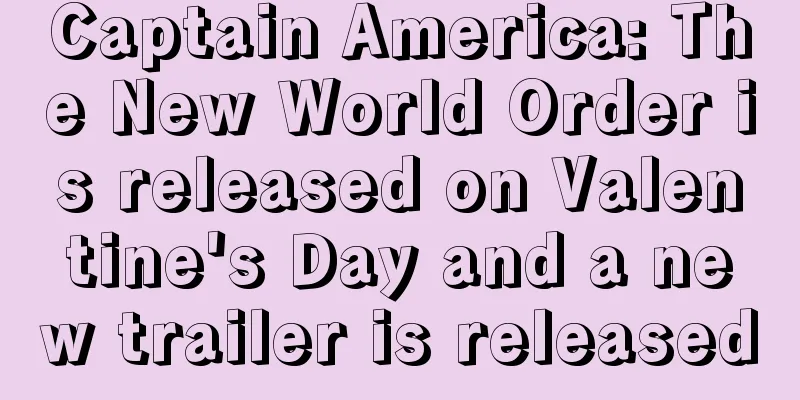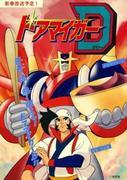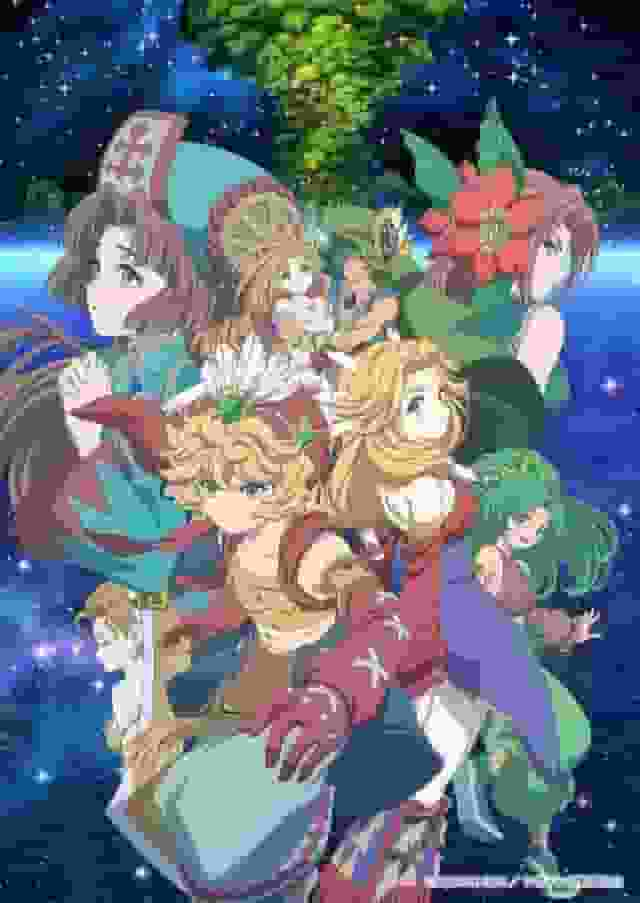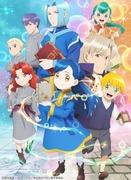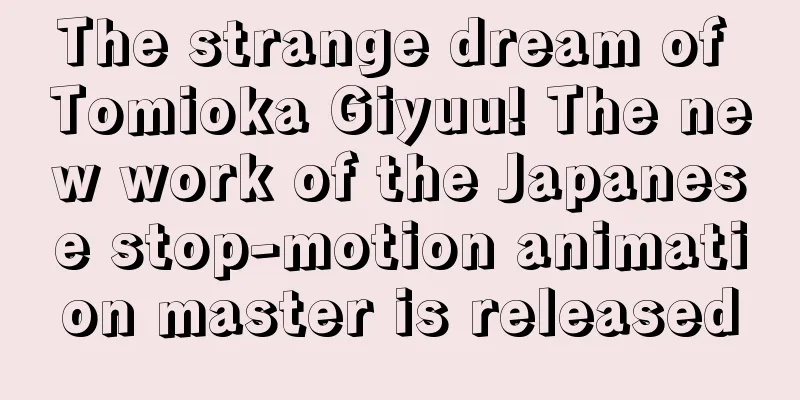My Emergency: A thorough review of the intense story and character depth

"My Emergency": A masterpiece of Japanese animation from the early Showa period■ Public Mediatheater ■ Original MediaAnime Original ■ Release date1936 ■Frequencies8 mins ■ Number of EpisodesEpisode 1 ■Original StoryOriginal author: Sanae Yamamoto ■ DirectorSanae Yamamoto ■ ProductionJapan Telegraph News Agency Motion Picture Department ■ Story One day, the cat army launches an air raid on the kingdom of animals living near a pond with planes. The frog army's planes also fight back. On the water, the cat navy launches an attack, but the fish navy repels them. At night, the cat army launches another air raid, but the rabbit's listening device and the goose's siren come into play. The small animals take refuge in the mole's house. A frog sleeping by the pond dreamed of an owl's eyes acting as a searchlight to defeat enemy planes. ■Explanation In 1937, Towa Shoji re-released the work under the title "Muteki Seigigun (Invincible Justice Army)." The characters are the same as in "Tekiki Kuraraba (If the enemy plane comes)." The main character is a frog, and a rabbit-like cat (?) with long ears appears, perhaps because the idea was based on the Choju Giga (Cartoon of the Animals). It's interesting to see new sci-fi weapons appear. ■ Main staff・Illustration and direction: Sanae Yamamoto ■ Related worksThe same character as in "If Enemy Planes Come." The appeal and evaluation of "My Emergency""My Emergency" is a Japanese animated film released in 1936, and is a fascinating work with its unique story and character settings. This work occupies an important position in the history of Japanese animation in the early Showa period, so let's take a closer look at its background, production process, and evaluation of the work. ■ Background of the work"My Emergency" was produced in 1936 by the Motion Picture Division of the Japan Telegraph Communication Company. This was a time when Japan was under the influence of militarism, and many works in this period strongly reflect the shadow of war. However, this work takes a unique approach, depicting the war between animals to express the horror and absurdity of war. Sanae Yamamoto, the director and author, was an important figure in the Japanese animation world at the time. His works often contain social messages, and "My Emergency" is one such example. By depicting the horrors of war from the perspective of animals, the film evokes deep emotions and reflection in the viewer. ■ The appeal of the storyThe story of "My Emergency" is about an air raid by the cat army on a kingdom of animals living near a pond. The cat army launches an attack with planes, and the frog army retaliates with planes. On the water, the cat navy launches an attack, but the fish navy repels them. At night, the cat army attempts another air raid, but the rabbit's listening device and the goose's siren come into play, and the small animals take refuge in the mole's house. The owl's eyes then function as a searchlight to repel the enemy planes. However, the punchline is that all of this was a dream of the frog who was sleeping in the pond. This story depicts the horror and humor of war at the same time, deeply moving the viewer. In particular, the scene in which animals play their respective roles satirizes the reality of war while emphasizing the importance of unity and cooperation. The dream setting is also depicted as a means of escaping the horror of war, encouraging deep reflection in the viewer. ■Charm of the charactersThe characters in "My Emergency" are animals who play their respective roles to move the story forward. The main character, a frog, is depicted fighting bravely despite the horrors of war. The long-eared, rabbit-like cat (?) is a character inspired by the Choju Jinbutsu Giga paintings, and its unique design is appealing. The story progresses as each character plays their own role, such as the rabbit's listening device, the goose's siren, and the mole's escape to his house. These characters satirize the realities of war while emphasizing the importance of unity and cooperation. The scene where the owl's eyes become a searchlight is depicted as a way to escape the horrors of war, and it deeply touches the audience. ■ Production processThe production process of "My Emergency" holds an important place in the world of Japanese animation at the time. Director and author Sanae Yamamoto created a work that deeply moves viewers and provokes reflection by depicting the horror of war from the perspective of animals. In addition, the scene in which new sci-fi weapons appear demonstrates the technological capabilities of the time and is appealing for its unique design. This work was re-released in 1937 by Towa Shoji under the title "Muteki Seigigun (The Invincible Army of Justice)." In an era when the shadow of war was strongly reflected, this work was highly praised as a work that deeply moved viewers by simultaneously depicting the horror and humor of war. In addition, the characters are the same as in "Tekiki Kuraraba," and their unique designs are attractive. ■ Evaluation and impact"My Emergency" occupies an important place in the history of Japanese animation in the early Showa period. The work was praised for simultaneously depicting the horror and humor of war, evoking deep emotion and reflection in the viewer. In addition, the scene in which new sci-fi weapons appear demonstrates the technological capabilities of the time, and its unique design is appealing. This work was highly praised for its ability to deeply move viewers by simultaneously depicting the horror and humor of war in an era when the shadow of war was still very much in the air. The characters are also the same as those in "Tekiki Kurara Ba", and their unique designs are appealing. The combination of these elements has earned "Oira no Houjouji" a reputation as a masterpiece of Japanese animation from the early Showa period. Recommendation for "My Emergency""My Emergency" occupies an important place in the history of Japanese animation in the early Showa period, and its unique story and character settings are appealing. By simultaneously depicting the horror and humor of war, the film was praised for evoking deep emotion and reflection in viewers. In addition, the scene in which new sci-fi weapons appear shows the technological capabilities of the time, and its unique design is appealing. This work was highly praised for its ability to deeply move viewers by simultaneously depicting the horror and humor of war in an era when the shadow of war was still very much in the air. The characters are also the same as those in "Tekiki Kurara Ba", and their unique designs are appealing. The combination of these elements has earned "Oira no Houjouji" a reputation as a masterpiece of Japanese animation from the early Showa period. Here are the reasons why I recommend "My Emergency": ■ Depicting the horror and humor of war"My Emergency" is a work that deeply moves and encourages reflection in the viewer by simultaneously depicting the horror and humor of war. The scenes in which animals play their respective roles satirize the reality of war while emphasizing the importance of unity and cooperation. The dream setting is also depicted as a means of escaping the horror of war, encouraging deep reflection in the viewer. ■ Unique character settingsThe characters in "My Emergency" are animals who play their respective roles to move the story forward. The main character, a frog, is depicted fighting bravely despite the horrors of war. The long-eared, rabbit-like cat (?) is inspired by the Choju Jinbutsu Giga paintings, and its unique design is appealing. These characters satirize the realities of war, while also emphasizing the importance of unity and cooperation. ■ The emergence of new science fiction weaponsIn "My Emergency," there are scenes depicting the emergence of new science fiction weapons. These weapons demonstrate the technological capabilities of the time, and their unique designs are appealing. In addition, by simultaneously depicting the horror and humor of war, the film has been praised for deeply inspiring viewers and inspiring reflection. The combination of these elements has earned "My Emergency" a reputation as a masterpiece of Japanese animation from the early Showa period. ■ The history of Japanese animation in the early Showa period"My Emergency" occupies an important place in the history of Japanese animation in the early Showa period. The work was praised for simultaneously depicting the horror and humor of war, evoking deep emotion and reflection in viewers. In addition, the scene in which new sci-fi weapons appear demonstrates the technological capabilities of the time, and its unique design is appealing. The combination of these elements makes "My Emergency" a masterpiece of Japanese animation in the early Showa period. Conclusion"My Emergency" occupies an important place in the history of Japanese animation in the early Showa period, and its unique story and character development are appealing. By simultaneously depicting the horror and humor of war, the film has been praised for evoking deep emotion and reflection in viewers. Additionally, the scene in which new sci-fi weapons appear demonstrates the technological capabilities of the time, and its unique design is appealing. The combination of these elements has earned "My Emergency" a reputation as a masterpiece of Japanese animation in the early Showa period. The reasons for recommending this work are its depiction of the horror and humor of war, its unique character development, the appearance of new sci-fi weapons, and its importance in the history of Japanese animation in the early Showa period. The combination of these elements makes "My Emergency" a work that deeply moves viewers and provokes self-reflection. Please watch this work and feel its charm. |
Recommend
Happy Dinosaur Song: A thorough analysis of the appeal of this song for everyone
The appeal and evaluation of Happy Dinosaur Song ...
A city in Osaka gives a surprise tax return as a gift to its hometown: a bust of Kenjiro Hokuto worth a fortune
At the end of the year, Japan has been holding a ...
The appeal and reviews of "Vampire Kids": The depth of an anime depicting the world of vampires
Vampire Kids: A Monster Family's Adventure in...
The Adventures of Tom Sawyer: An emotional journey based on the classic
The Adventures of Tom Sawyer: The Adventures of a...
Netflix's "One Piece" live-action drama latest poster officially aired on August 31
According to Twitter today (August 2), Anime TV o...
The producer announced that the live-action movie "Mortal Kombat 2" has been filmed and the release date has not been determined
Today, January 22, Todd Garner, producer of the l...
The screenwriter of "Arrival" created the sci-fi suspense film "Extinction" scheduled for January 18
Today (January 3), the sci-fi suspense masterpiec...
Disney CEO: Company's future success requires big-budget animated sequels
Following rumors last month that Disney may be pr...
The appeal and evaluation of Night Wizard: A world where fantasy and battle intersect
Night Wizard: A tale of unconventional battles &q...
Jurassic World 3 is expected to exceed $50 million in its first overseas week, with South Korea leading the way
The Hollywood blockbuster "Jurassic World 3&...
Kyoto Animation's "A Shot That Kiss Me" new trailer to be released in 2023
The TV animation of "A Shot from the Strings...
The appeal and evaluation of the second short anime series "Golden Kamuy"
Golden Kamuy Golden Doga Gekijyo review and detai...
Review of "Seven Stars of Subaru": Charming characters and a moving story
Seven Stars Subaru - Shichisei no Subaru - Detail...
"Godzilla vs. Kong 2" has exceeded 87 million in domestic box office and it seems that there is no doubt that it will exceed 100 million
According to Maoyan Professional Edition data, as...
Doctor Strange 2 banned in Saudi Arabia for featuring gay character
Marvel Studios' Doctor Strange 2 has been ban...
